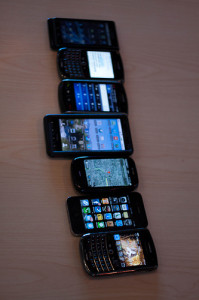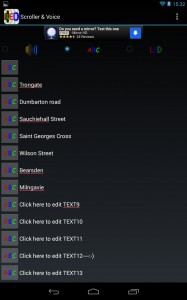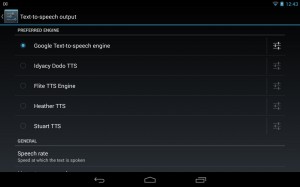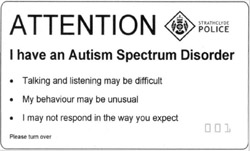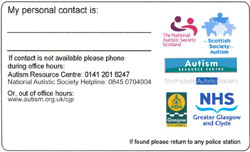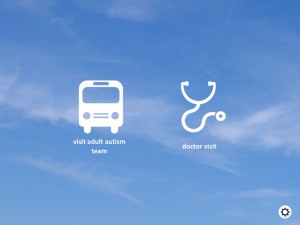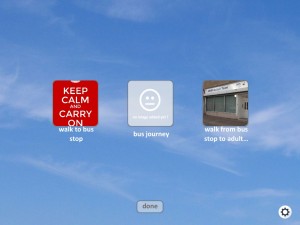In reading some of the research studies involving adults on the autistic spectrum, one of the more valuable functions an assistive device can have is to remind the person of upcoming events or the next step to take when tackling a sequence of tasks. Autism can make it harder for individuals to adjust to changes of routine so anything that will provide a pointer to what comes next could be useful. There can be times where people have poor memory and forget that they have important appointments to keep, or you become so engrossed in one particular task that you need some kind of “nudge” as a reminder to move to the next task. It’s no exaggeration to say that there are literally thousands of apps available for smartphones that can assist with time and task management – it’s a very highly utilised category of app for all people.
Clocks and alarms
Most mobile phones, even the most basic kind, have some kind of a clock feature built-in. And where you find a electronic clock you will often find means of settings alarms for alerts at particular times. You can usually choose what sound or ring tone should be used when the alarm goes off, on some devices you can even choose to play a music track on your device. Also useful is a countdown timer – say you have a particular task that is supposed to be carried out within a certain amount of time, then set a countdown alarm and an alarm will go off after that particular amount of time has passed.
Using Clock app on iOS (iPhone/iPod/iPad)
- How to Use the Alarm Clock on Your iPhone (and iPod/iPad)
-
How The Clock and Alarm Works In iOS 7
Demo of using World Clock/Alarm/Stopwatch and Timer features of the Clock app
Android alarms
On Android the clock app may vary by who manufactured your device, you may have an analogue clock face or a digital clock display and often the choice of which kind you prefer. A clock is usually displayed on your home page on your device (the screen you see when you first start it up). On some devices you can set alarms via tapping on the clock.
- How to: Set an Alarm on Your Android Phone [Beginners’ Guide]
- If you prefer other styles of clocks there’s a range of free Android alarm apps
Calendars and event reminders
Similar to clocks for time, devices will usually have at least a basic calendar feature to show the date and days of the month. On smartphones calendar apps become particularly powerful when you are able to add your own events to their calendar for reference and optionally receive notifications and reminders. This can be an excellent way of planning for the future by making sure you don’t miss something important.
In the calendar entry for the event itself there may be space to enter names/addresses/photos, anything of relevance to that event or venue. For visual learners you may wish to add photos of people you are due to meet or buildings you have to visit. For events taking place at a different location you could include transportation/journey details in advance so that you don’t have to figure that out on the day when you may be more stressed. For events in the calendar you can add alerts that pop up something visual on your phone to remind you and/or play some sound.
Google Calendar
- On a smartphone, when the calendar on your device is connected with online services like Google Calendar (see Sync Calendar with a mobile device) you can also get Google Calendar to notify you by email or send SMS text messages as reminders.
- You can even use mapping facilities based on your calendar event address to show you where the event is located and travel routes to get there. Tip: when you add an event fill in at least a UK postcode into the box marked “Where”, save the event, then you should see a link called “Map” – click on that and you should see the location displayed on a Google Map. Very useful if you’re going somewhere you’ve never been before.
Using Calendar app on iOS (iPhone/iPod/iPad)
Details of how to use the Calendar app on iOS devices can be found in your “User Guide” document – downloadable from the Support:Manuals section of the Apple website.
See also
- How to…find user manuals for mobile phones – have you read yours?
- Augmentative and alternative communication supports for adults with autism spectrum disorders [Research Paper] explains how visual timetables can help reduce stress and support comprehension.
